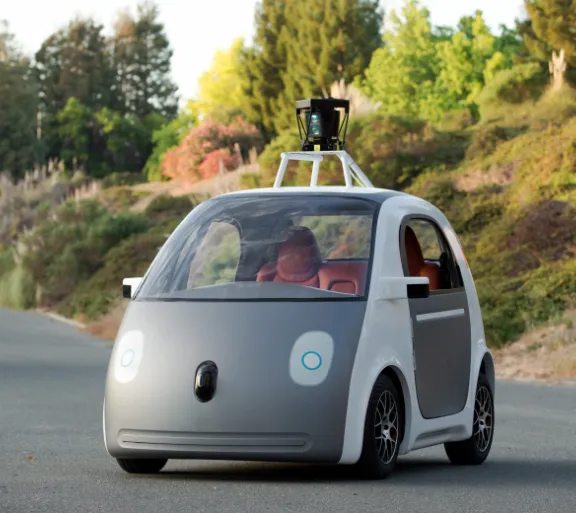What Google Car Can Learn From Salesforce
Photo credit: Handout, Google via AP
I am very familiar with bad driving. In fact I am probably one of the worst drivers you will ever meet. I have managed to hit livestock, total a car, and sideswipe an oncoming vehicle with a finesse that would make Starsky and Hutch green with envy. Each instance was done entirely sober I might add.
As you can imagine, I’m following the Google car news closely - with its auto-driving capability it is perfect for a guy like me. No more driving distractions while I commute, and I can focus completely on what I want rather than those pesky commuters or pedestrians.
The value of the Google car is obvious: elderly people are no longer trapped within the limits of their driving capabilities, you can program your car to find parking, and even text with ease – the possibilities are endless. But Google should not stop there. The Google car can be so much more than simply convenient. It can be an industry that creates jobs and encourages innovation. There is no better example of this than Salesforce.com. Here are a few things Google could learn from Salesforce:
Make it personal.
Salesforce.com realized that everyone’s CRM experience was similar but different. Those subtle differences needed to be addressed if they were to get people to feel both vested and engaged with their CRM. They did this by making Salesforce.com customization approachable to the everyday user. More importantly, in 2008 they debuted the AppExchange which allowed people to enhance their CRM beyond CRM. Google car will offer colors and likely some options like leather seats, but why stop there? Google applications that provide options such as GPS mapping to favorite locations, or ability to adjust the seat every 20 minutes for driving comfort are just the ticket to get drivers to feel the experience is theirs and so is the car.
Optimize and enhance.
Why must I always drive my car to the mechanic? If car companies want me to buy another car from them (and I am sure they do), shouldn’t they simplify the maintenance process? Salesforce.com realized that people have no interest in downloading upgrades. With a licensing agreement they removed the hassle of ownership. Google car could conceivably do the same. Make it so every time I turn the key in the ignition, I am assured it will start. Even better, have the car drop itself off while I am at work…the equivalent of a Salesforce optimization on a Sunday afternoon.
Consume less, share better.
I drive my car roughly 30 minutes a day. It does nothing the rest of the day other than provide target practice for a flock of pigeons. With Google’s auto-drive functionality there is absolutely no reason why my car could not be leased to serve other functions while I am not driving it. Someone somewhere nearby probably a trip to the grocery store…how about my car takes them there. Salesforce.com made it possible to share a CRM experience whether you are in or out of the office. Location was not pertinent to utilization. Google car is no different. You no longer need to be in your car to utilize it; let’s take advantage of that.
Focus on relationships, not possessions.
For all this to work we have to give up old ideas of ownership and think about what we really need to possess. For Salesforce.com to be successful people had to give up traditional concepts of ownership. The concept of someone else holding your data while you worked on it seemed daunting. In the early days of cloud computing, people would argue (with sincerity) that the data that was housed in their office server, protected by a $50.00 bolt lock was somehow safer than a Salesforce.com server with backed-up security in well- protected data houses. At the time, it seemed an impossible argument but Salesforce.com now houses 1010100000 Gigabits of other people’s data in multiple locations. Google has an opportunity to do this with automobiles. We no longer need to own our car…just the experience. With a little effort Google Cars can do for cars what Salesforce.com did for servers. It is not the cabin or the metal frame of the car that is the precious cargo – it is our relationships and experiences that are valuable.
So there you have it, Google…all your questions answered and all you need to do is look in your own Salesforce.com instance. You do have Salesforce.com, don’t you?
For more editorials on the latest ways Salesforce is pushing the envelope, check out our recent post What is Salesforce1 for Nonprofits and Why Should You Care.
















